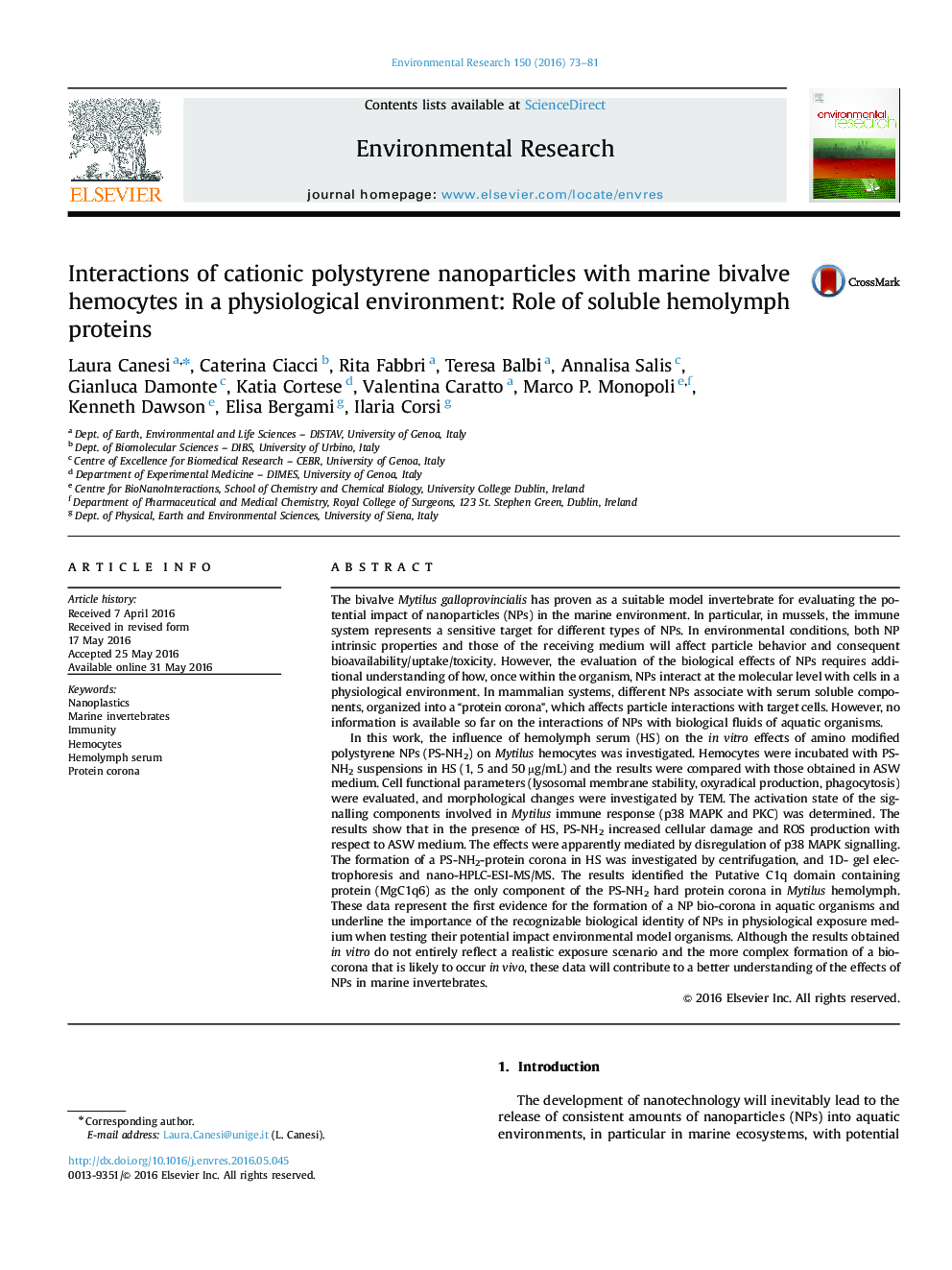| کد مقاله | کد نشریه | سال انتشار | مقاله انگلیسی | نسخه تمام متن |
|---|---|---|---|---|
| 6351066 | 1622553 | 2016 | 9 صفحه PDF | دانلود رایگان |
- The effects of PS-NH2 NPs on Mytilus hemocytes were compared in serum-HS and ASW.
- HS increased cellular/lysosomal damage, ROS production and p-p38MAPK levels.
- NP-corona proteins in HS were isolated and identified by MS.
- NP-protein coronas in biological fluids can affect NP impact in marine species.
The bivalve Mytilus galloprovincialis has proven as a suitable model invertebrate for evaluating the potential impact of nanoparticles (NPs) in the marine environment. In particular, in mussels, the immune system represents a sensitive target for different types of NPs. In environmental conditions, both NP intrinsic properties and those of the receiving medium will affect particle behavior and consequent bioavailability/uptake/toxicity. However, the evaluation of the biological effects of NPs requires additional understanding of how, once within the organism, NPs interact at the molecular level with cells in a physiological environment. In mammalian systems, different NPs associate with serum soluble components, organized into a “protein corona”, which affects particle interactions with target cells. However, no information is available so far on the interactions of NPs with biological fluids of aquatic organisms.In this work, the influence of hemolymph serum (HS) on the in vitro effects of amino modified polystyrene NPs (PS-NH2) on Mytilus hemocytes was investigated. Hemocytes were incubated with PS-NH2 suspensions in HS (1, 5 and 50 µg/mL) and the results were compared with those obtained in ASW medium. Cell functional parameters (lysosomal membrane stability, oxyradical production, phagocytosis) were evaluated, and morphological changes were investigated by TEM. The activation state of the signalling components involved in Mytilus immune response (p38 MAPK and PKC) was determined. The results show that in the presence of HS, PS-NH2 increased cellular damage and ROS production with respect to ASW medium. The effects were apparently mediated by disregulation of p38 MAPK signalling. The formation of a PS-NH2-protein corona in HS was investigated by centrifugation, and 1D- gel electrophoresis and nano-HPLC-ESI-MS/MS. The results identified the Putative C1q domain containing protein (MgC1q6) as the only component of the PS-NH2 hard protein corona in Mytilus hemolymph. These data represent the first evidence for the formation of a NP bio-corona in aquatic organisms and underline the importance of the recognizable biological identity of NPs in physiological exposure medium when testing their potential impact environmental model organisms. Although the results obtained in vitro do not entirely reflect a realistic exposure scenario and the more complex formation of a bio-corona that is likely to occur in vivo, these data will contribute to a better understanding of the effects of NPs in marine invertebrates.
Journal: Environmental Research - Volume 150, October 2016, Pages 73-81
